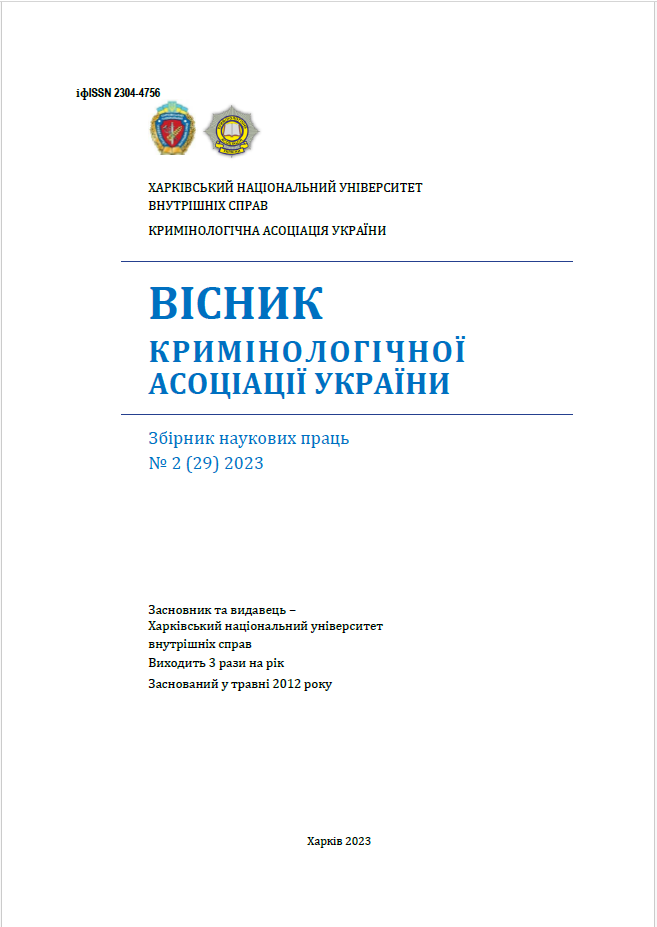FORENSIC ANALYSIS OF THE METHOD OF COMMITTING HOOLIGANISM
Main Article Content
Abstract
The article is devoted to consideration of some aspects of hooliganism
investigation. The method of commission is analyzed as an element of the forensic
characteristics of the specified offense. It is noted that the method of committing a
criminal offense is considered by most scientists to be the central element of the
forensic characteristics of any illegal act. Indeed, the specified element is
characterized by constant correlation with all other components of the specified
scientific category. In the context of criminal proceedings initiated under Art. 296
of the Criminal Code of Ukraine, the method of execution does not lose its
importance, but, on the contrary, even increases its importance. Because hooligan
actions have various methods of direct execution, as well as methods of
preparation and concealment.
It is noted that hooligans can implement measures to prepare for their
commission, in particular: developing a plan of hooligan actions; selection of the
object of encroachment; searching for, adapting and preparing tools and means of
illegal actions; selection of accomplices and distribution of roles between them.
The following ways of directly committing hooliganism were found out, such as:
cynical body movements in combination with obscene swearing; disturbing the
peace of citizens in public places; resistance to representatives of law
enforcement agencies; causing bodily harm to law enforcement officers; use of
firearms, cold weapons, specially adapted objects for inflicting bodily injuries;
violation of the normal operation of enterprises, institutions, organizations; use of
pyrotechnics.
The following methods of concealing hooligan actions have been
established, such as: disappearing from the place of a violent act; disappearing
from the scene of the crime using a motor vehicle; destruction of tools of illegal
activity; liquidation of clothes, shoes; giving false testimony, including an alibi;
refusal to testify.
Article Details

This work is licensed under a Creative Commons Attribution 4.0 International License.
